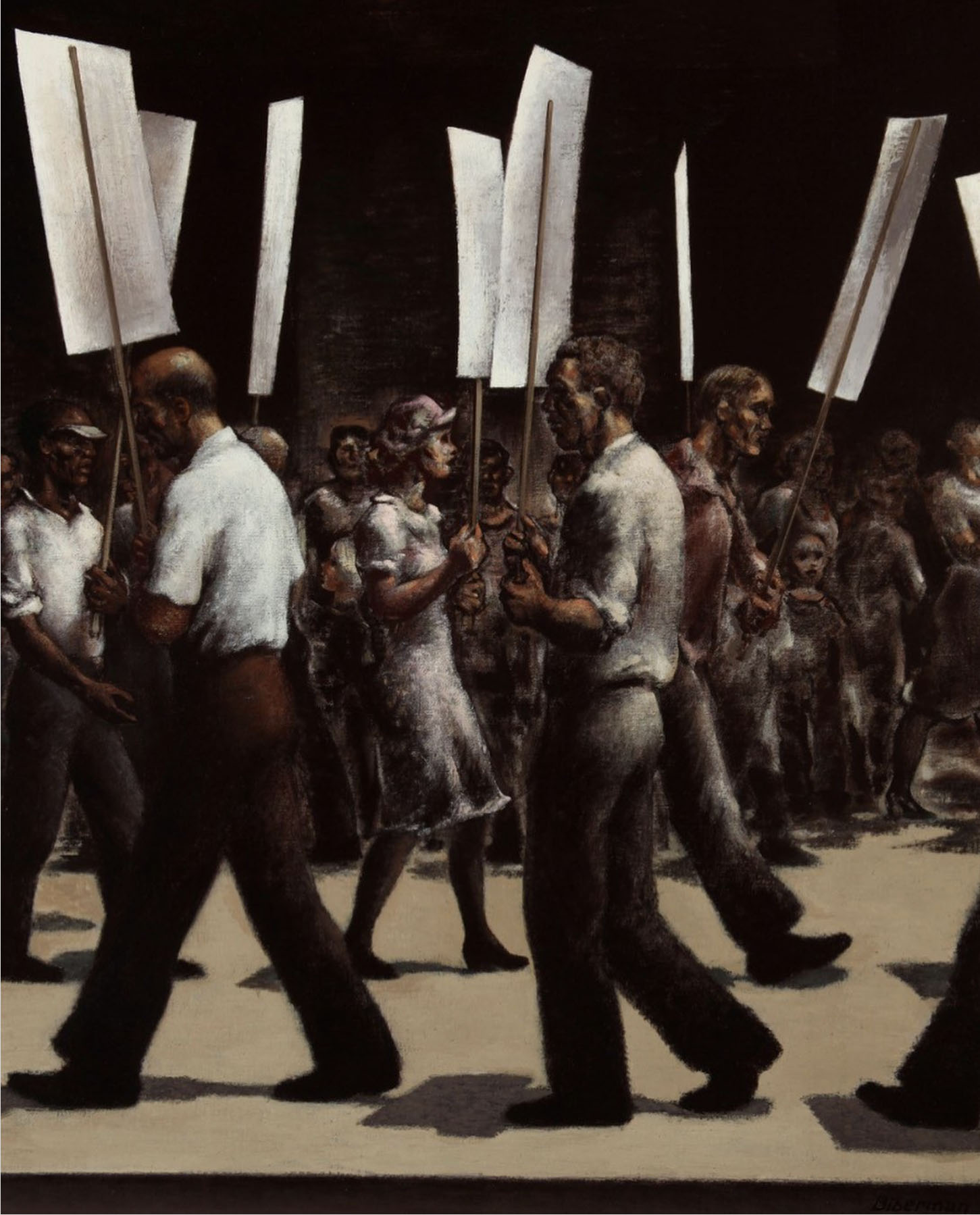Edward Biberman on Hollywood's Bloodiest Strike
 |
| Edward Biberman, Pavement Patterns (Pickets), 1945. The Buck Collection at the UCI Institute and Museum for California Art. © Estate of Edward Biberman |
"Some among the hundreds of strikers and their supporters were 'knifed, clubbed and gassed,' while others were swept off their feet by spray from fire hoses. The glass of smashed windshields littered the pavement. There were 'tear gas bomb blasts' and overturned cars. Periodic fistfights at times engaged a dozen men or more."
The LAPD sided with the studios and acted as union-busting goons. Among the few actors crossing the picket lines was Ronald Reagan.
 |
| Picket line at Paramount Studios, June 29, 1945. The picketers carried signs in many languages, symbolizing Hollywood's global reach. Herald Examiner Collection, Los Angeles Public Library |
The strike reportage fed claims of rampant Communism in Hollywood and the union movement. A decade later, the House Un-American Activities Committee hearings declared both Edward Biberman and his screenwriter brother Herbert to be Communists. Neither Biberman's career fully recovered. Edward however got one of his best paintings out of the HUAC hearings, Conspiracy.
 |
| Edward Biberman, Conspiracy, about 1955. LACMA |
Comments
Per LACMA's web site, it's media are oil on board. It's so richly rendered, I thought it might be tempera, or guache. Very emotionally provocative.
The writers of Hollywood are associated with a lot of quantity over quality (a reaction the Lucas museum might trigger in some observers?) and the specter of AI output becoming more and more common, human writers less and less so. Brave new world.
As for George Lucas, the franchise that put him on the map in the 1970s has apparently become tarnished over the past 10 years, and there are rumors he'd like to try to salvage things. If so, between that and his museum, I wonder what in the next, say, 5 years will occupy more of his time?
https://youtu.be/TUCnsS72Q9s
I wonder if AI eventually becomes so sophisticated that it's able to judge and manage things like LACMA's new building with a bit more logic or common sense than humans do?